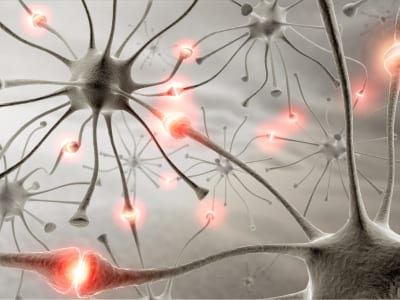
New genetic evidence adds strength to the theory that abnormal connections between brain cells are at the root of autism.
Autism is just one of the autism spectrum disorders (ASDs), a group of childhood developmental disorders that cause impairments in verbal communication, social interaction and behavior. An estimated one in 150 children in the United States is affected. Studies have indicated a strong genetic contribution to ASDs, but only a few rare genetic risk factors have been identified so far. Now two reports, published online today by the journal Nature, demonstrate an association between the risk for autism and common genetic variants in and around genes that affect how brain cells migrate to the correct places in the brain and adhere to one another.
“Although we cannot immediately apply this research to clinical treatment, these findings increase our understanding of how autism spectrum disorders arise, and may in time foster the development of strategies for prevention and early treatment,” said Susan Levy, a co-author of both studies.
A large research team, led by Hakon Hakonarson of Children’s Hospital of Philadelphia and including scientists from more than a dozen research institutions, analyzed DNA from more than 10,000 people with European ancestry, including people with autism, their families and volunteers from the community. They found several SNPs associated with autism. All were located in a region of DNA between two genes, CDH9 and CDH10, which encode proteins called cadherins.
“These molecules are expressed on the cell surfaces of neurons, and they are involved with shaping both the physical structure of the developing brain and the functional connections among different brain regions. Although a particular gene variant may contribute a small risk for an ASD in a particular individual, we estimate that the variants we discovered may contribute to as many as 15 percent of ASD cases in a population,” said Hakonarson in a statement.
Analysis of human fetal brain tissue revealed that the CDH10 gene is expressed at high levels in the frontal cortex, a brain region critical for language, social behavior and complex thought processes.
“It’s no coincidence that a gene linked to autism has a higher concentration in key brain regions that regulate speech and the ability to interpret social interaction. Our research suggests that CDH10 is switched on at a very early stage and plays an important role in regulating the developing brain. This prenatal activity somehow makes the infant more susceptible to autism,” said Daniel Geschwind, a study co-author and director the UCLA Center for Autism Treatment and Research, in a statement.
In the second Nature study, also led by Hakonarson, researchers turned their focus away from SNPs — single letter differences in the genetic code — and instead investigated the role of copy number variations (CNVs) — small deletions and duplications DNA — in autism.
The CNVs Hakonarson and co-workers identified occurred mostly in genes that fall into two biological pathways: cell adhesion, the same pathway affected by the SNPs found in the first study, and the ubiquitin degradation pathway, a kind of cellular waste disposal system. Among other things, enzymes in the ubiquitin pathway are involved in eliminating connections between nerve cells by destroying cell adhesion proteins, suggesting that variants in this pathway might also be affecting cell-to-cell connections in the brain.
In addition to their genetic findings, the authors say that recent neuroimaging studies that have suggested underconnectivity in the brains of subjects with ASDs and neuroanatomy studies that have implicated abnormal brain development in the frontal lobes of people with autism support the idea that altered cell-to-cell connections are a key component of autism.
Hakonarson and colleagues plan to continue researching autism, focusing their efforts on elucidating how the genetic variations they have identified might cause autism. One experiment suggested by Hakonarson is to mutate cell adhesion proteins like cadherins in mice and look for changes in social behavior that mimic those seen in humans with autism.